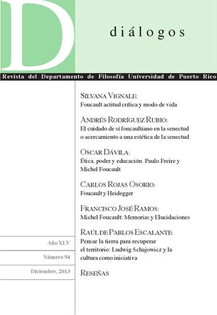Abstract
In this essay our framework will be Jacques Rancière‘s aesthetic perspective as mainly presented in his work Malaise dans l‘esthétique to examine the critical role that certain works or artistic practices can play in the production and transformation of social space. In his book the philosopher presents an extreme defense of aesthetics in its most political dimension, where art is not political by the messages and feelings it conveys, but by the reconfiguration of the particular sensorium it produces. We are interested in exploring and thinking artistic practices in regard to their ability to work as a mechanism that offers an opportunity for critical analysis on certain political issues. What makes the political be present in an artistic work or practice, as a constituent part of the aesthetic experience, is not its content or the discourse it supports, but how it does it. To clarify this assumption, among the examples that we will analyze is the video/installation 12 vecinas of the Puerto Rican artist Marisol Plard.Downloads
Download data is not yet available.

